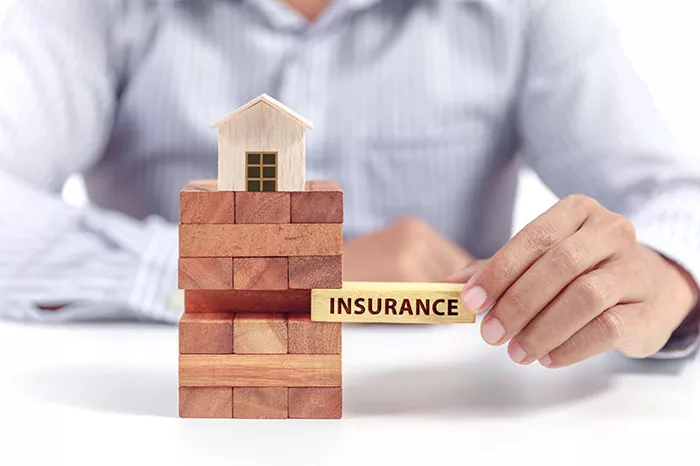Home insurance comes in various forms, tailored to different living situations and property types. Whether you own a house, rent an apartment, or live in a condominium, there’s a policy designed to protect your home and belongings. In this article, we’ll delve into the different types of home insurance policies, their coverage options, specialized policies, policy components, optional coverages, factors affecting premiums, tips for choosing the right policy, and a focus on the local context in Hong Kong.
Standard Homeowners Insurance
Standard homeowners insurance typically provides coverage for your dwelling, personal property, liability, and additional living expenses in case your home becomes uninhabitable due to a covered loss. The most common forms of homeowners insurance are known as HO-1 through HO-8, each offering varying levels of coverage and protection.
HO-1: This basic form of coverage provides protection against specifically named perils such as fire, theft, vandalism, and certain natural disasters.
HO-2: Also known as “broad form” insurance, HO-2 policies cover a wider range of perils than HO-1, including additional hazards like falling objects and damage from weight of snow, ice, or sleet.
HO-3: The most common type of homeowners insurance, HO-3 policies provide “all-risk” coverage for your dwelling and other structures, while personal property coverage is typically provided on a “named perils” basis.
HO-4: Designed for renters, HO-4 policies cover personal property and liability but do not include coverage for the dwelling itself.
HO-5: Known as “comprehensive form” insurance, HO-5 policies offer broader coverage for both the dwelling and personal property, typically on an “all-risk” basis.
HO-6: Tailored for condominium owners, HO-6 policies cover personal property, liability, and improvements made to the unit, but not the structure of the building.
HO-7: Similar to HO-3 but designed for mobile homes, HO-7 policies provide coverage for the dwelling, personal property, and liability.
HO-8: HO-8 policies are designed for older homes and provide limited coverage for the dwelling, usually on an actual cash value basis.
Each of these forms of homeowners insurance offers different levels of protection, so it’s essential to understand your policy’s coverage and limitations.
Specialized Policies
In addition to standard homeowners insurance, there are specialized policies available to protect against specific risks, such as floods, earthquakes, and high-value homes.
Flood Insurance: Standard homeowners insurance typically does not cover flood damage, so if you live in a flood-prone area, purchasing separate flood insurance is crucial. In Hong Kong, where heavy rainfall and typhoons are common, flood insurance can provide valuable protection against water damage.
Earthquake Insurance: Similarly, earthquakes are not covered under standard policies, making earthquake insurance important for residents in seismically active regions like Hong Kong.
Insurance for High-Value Homes: For homeowners with high-value properties, standard insurance may not provide adequate coverage for the full replacement cost of their homes and belongings. High-value home insurance offers enhanced coverage limits and additional protection for valuable assets.
These specialized policies fill the gaps left by standard homeowners insurance, ensuring comprehensive coverage against a range of potential risks.
Policy Components
Home insurance policies consist of several main components, each offering protection for different aspects of your property and liabilities.
Dwelling Coverage: Protects the physical structure of your home against covered perils such as fire, windstorm, and vandalism.
Personal Property Coverage: Covers your belongings, including furniture, clothing, electronics, and other personal items, against theft, damage, or loss.
Liability Coverage: Provides financial protection if you are found responsible for causing injury or property damage to others, either on or off your property.
Additional Living Expenses (ALE): Reimburses you for temporary living expenses if your home becomes uninhabitable due to a covered loss, such as hotel bills and restaurant meals.
Understanding these components helps ensure you have the right coverage in place to protect your home and assets.
Optional Coverages
In addition to the standard components of home insurance, policyholders can often add optional coverages to customize their policies to better suit their needs.
Protection for High-Value Items: This optional coverage extends the coverage limits for valuable items such as jewelry, artwork, and collectibles beyond what is provided in the standard policy.
Accidental Damage Coverage: Offers protection against accidental damage to your home or belongings that is not caused by a covered peril.
Home Emergency Cover: Provides assistance and coverage for emergency repairs such as burst pipes, electrical failures, and locksmith services.
Opting for these additional coverages can provide added peace of mind and protection against unforeseen circumstances.
Factors Affecting Premiums
Several factors influence the cost of home insurance premiums, including:
Property Location: The location of your home, including its susceptibility to natural disasters and crime rates, can impact your insurance premiums.
Property Size and Value: Larger, more valuable homes typically have higher insurance premiums due to the increased replacement cost.
Claims History: A history of previous insurance claims can affect your premiums, as insurers may view you as a higher risk.
Understanding these factors can help you anticipate the cost of home insurance and make informed decisions when selecting a policy.
Choosing the Right Policy
When choosing a home insurance policy, it’s essential to consider your individual needs and circumstances. Here are some tips to help you make the right decision:
Assess Risks: Identify potential risks to your home and belongings, such as natural disasters, theft, or liability exposures.
Compare Coverage Options: Review different policy options and compare coverage limits, deductibles, and exclusions to find the best fit for your needs.
Understand Policy Limitations: Be aware of any limitations or exclusions in your policy, especially regarding high-value items or specialized risks like floods or earthquakes.
By carefully evaluating your options and understanding your coverage needs, you can select a policy that provides adequate protection for your home and assets.
Local Context
In Hong Kong, home insurance offerings cater to the unique needs of residents in this bustling city. With frequent typhoons and heavy rainfall, flood insurance and coverage for water damage are essential considerations for homeowners. Additionally, earthquake insurance provides valuable protection against seismic events, given Hong Kong’s proximity to earthquake-prone regions.
Local regulations and common practices may also influence the availability and cost of home insurance in Hong Kong. Working with a reputable insurance provider familiar with the local market can help ensure you have the right coverage in place to protect your home and belongings.
Conclusion
Home insurance plays a crucial role in safeguarding your most significant investment and providing financial protection against unexpected events. By understanding the various types of home insurance policies, coverage options, and factors that influence premiums, you can make informed decisions to protect your home and assets effectively.
FAQs about Homeowners Insurance
1. What is the most common type of homeowners insurance?
The most common type of homeowners insurance is called an HO-3 policy, also known as a special form policy. This type of insurance provides coverage for the structure of your home (dwelling), as well as personal property, liability protection, and additional living expenses in case your home becomes uninhabitable due to a covered peril.
2. What are the three most common types of insurance?
The three most common types of insurance are:
Auto Insurance: Provides coverage for damage to your vehicle and liability protection in case of accidents.
Health Insurance: Offers financial protection against medical expenses, including doctor visits, hospital stays, and prescription drugs.
Homeowners Insurance: Protects your home, personal belongings, and provides liability coverage in case of property damage or injuries on your property.
3. What is the most common use of homeowners insurance?
The most common use of homeowners insurance is to protect your home and personal belongings against unexpected events such as fire, theft, vandalism, or natural disasters like storms or earthquakes. Homeowners insurance can also provide liability coverage in case someone is injured on your property and decides to sue you for damages.
4. What insurance do you need on your house?
The insurance you need on your house depends on various factors such as your location, the value of your home, and your personal preferences. However, some essential types of insurance to consider for your house include:
Homeowners Insurance: Provides coverage for the structure of your home, personal belongings, liability protection, and additional living expenses.
Flood Insurance: If you live in an area prone to flooding, it’s essential to consider purchasing flood insurance as standard homeowners insurance typically does not cover flood damage.
Earthquake Insurance: If you reside in an earthquake-prone region, earthquake insurance can provide coverage for damage to your home and personal property caused by seismic activity.
Home Warranty: While not technically insurance, a home warranty can offer coverage for repairs or replacements of major appliances and systems in your home, such as HVAC systems, plumbing, and electrical systems.
You Might Be Interested In




















